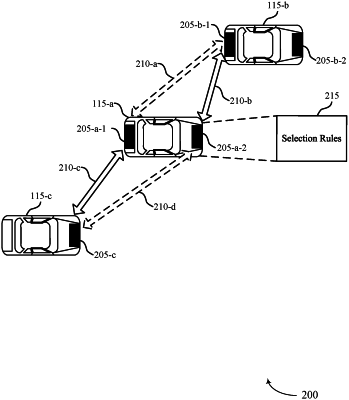| CPC H04W 56/0015 (2013.01) [H04B 17/318 (2015.01); H04W 4/40 (2018.02); H04W 24/10 (2013.01); H04W 56/0095 (2013.01)] | 30 Claims |

|
1. A method for wireless communications at a user equipment (UE), comprising:
measuring a first synchronization signal received at both a first transceiver node and a second transceiver node, wherein the first transceiver node is positioned at a first physical location on the UE and the second transceiver node is positioned at a second physical location on the UE that is different than the first physical location;
measuring a second synchronization signal received at both the first transceiver node and the second transceiver node;
selecting, based at least in part on a rule and from the first synchronization signal and the second synchronization signal, wherein the rule indicates selection between the first synchronization signal and the second synchronization signal when both are received at the first transceiver node positioned at the first physical location on the UE an at the second transceiver node positioned at the second physical location on the UE that is different than the first physical location; and
forwarding the selected synchronization signal to one or more other UEs based at least in part on the selecting.
|